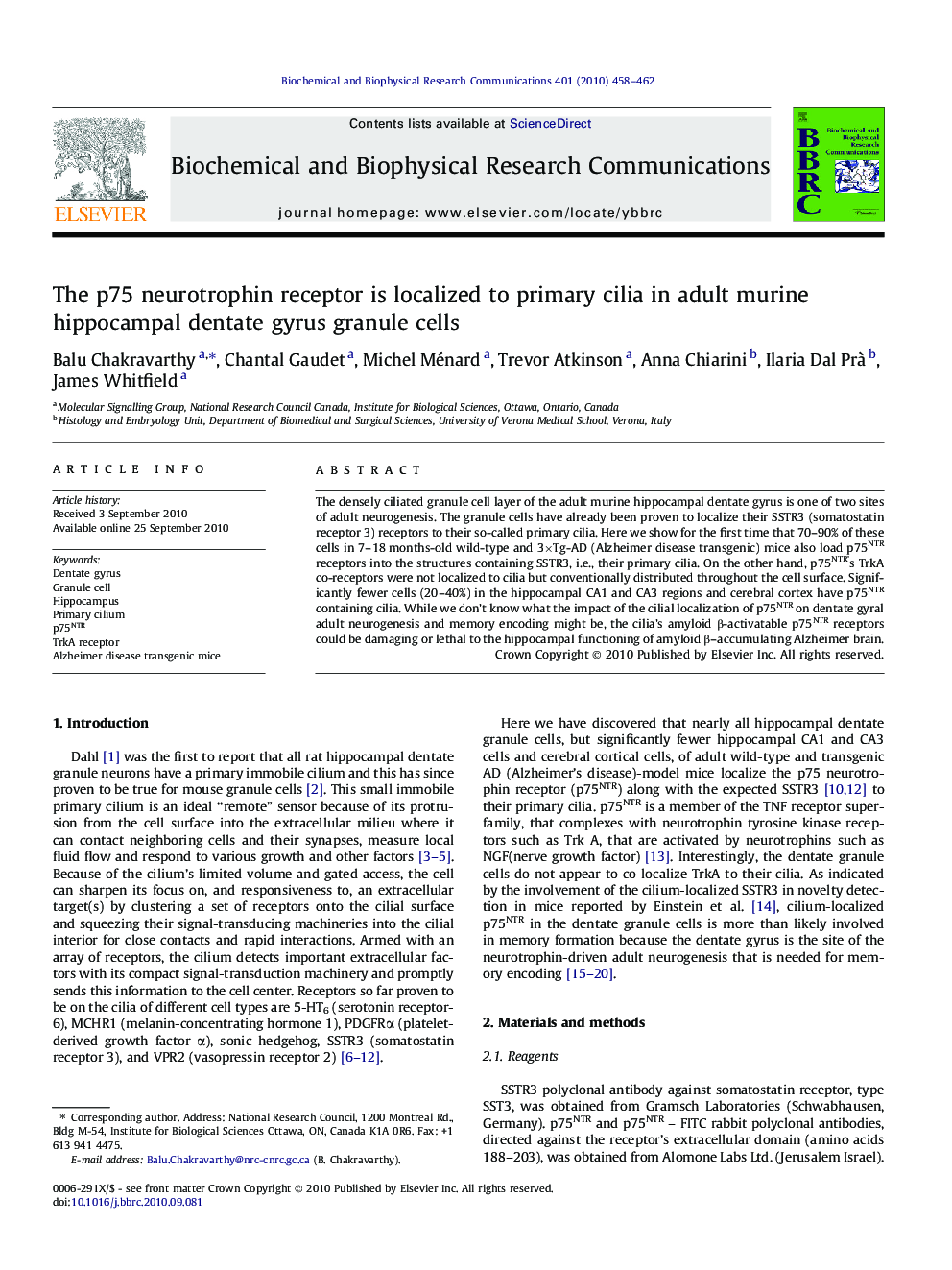| Article ID | Journal | Published Year | Pages | File Type |
|---|---|---|---|---|
| 1931320 | Biochemical and Biophysical Research Communications | 2010 | 5 Pages |
The densely ciliated granule cell layer of the adult murine hippocampal dentate gyrus is one of two sites of adult neurogenesis. The granule cells have already been proven to localize their SSTR3 (somatostatin receptor 3) receptors to their so-called primary cilia. Here we show for the first time that 70–90% of these cells in 7–18 months-old wild-type and 3×Tg-AD (Alzheimer disease transgenic) mice also load p75NTR receptors into the structures containing SSTR3, i.e., their primary cilia. On the other hand, p75NTR’s TrkA co-receptors were not localized to cilia but conventionally distributed throughout the cell surface. Significantly fewer cells (20–40%) in the hippocampal CA1 and CA3 regions and cerebral cortex have p75NTR containing cilia. While we don’t know what the impact of the cilial localization of p75NTR on dentate gyral adult neurogenesis and memory encoding might be, the cilia’s amyloid β-activatable p75NTR receptors could be damaging or lethal to the hippocampal functioning of amyloid β–accumulating Alzheimer brain.
Research highlights► Localization of p75 neurotrophin receptor (p75NTR) to primary cilia of rodent hippocampal dentate granule cells. ► p75NTR co-localizes with somatostatin receptor 3 (SSTR3) in the primary cilia. ► Both SSTR3 and p75NTR may be involved in adult neurogenesis and memory formation in dentate granule cells.
